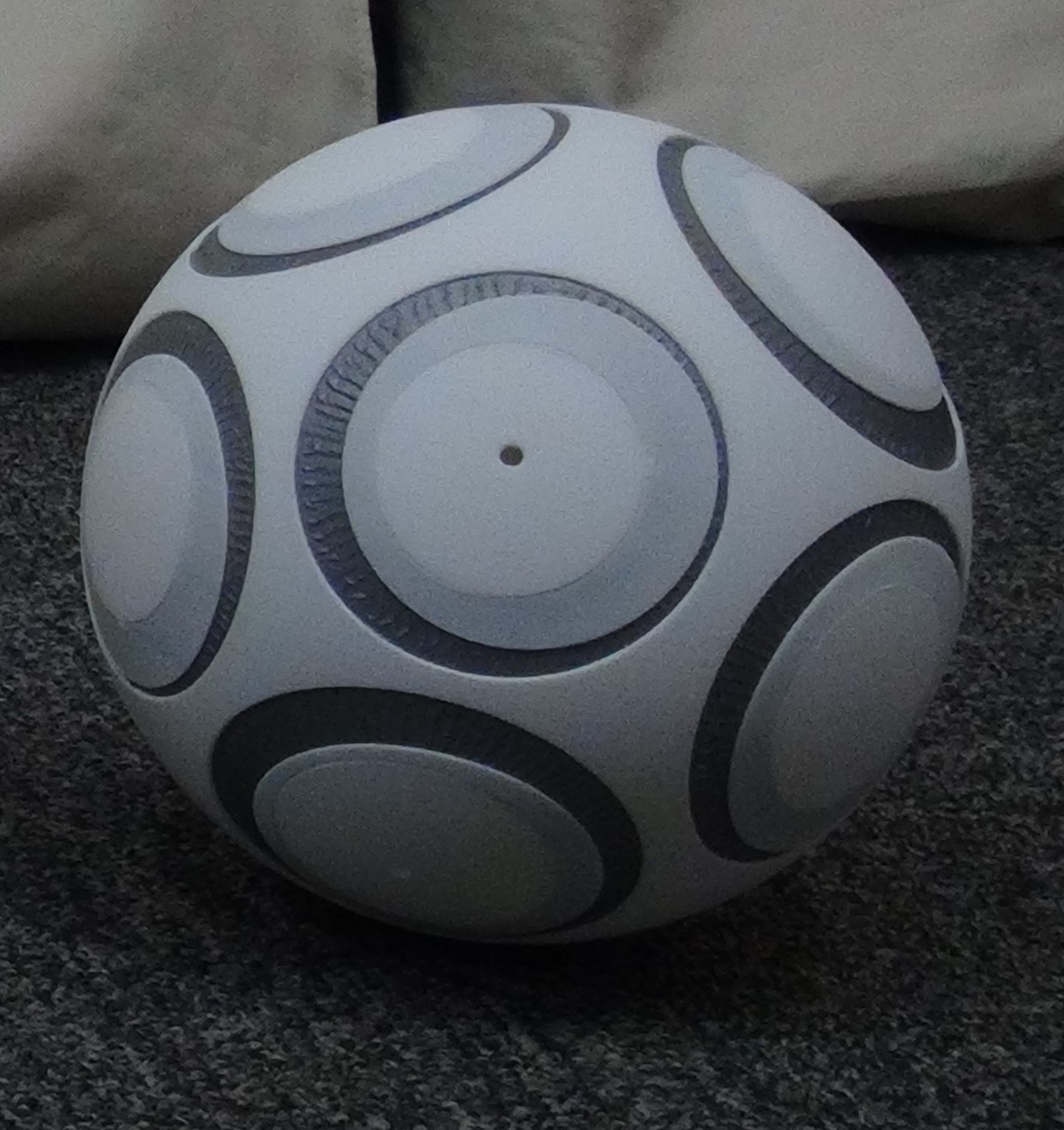Biased Circumferential Marker (BCM): Dynamic Projection Mapping Using Estimated Absoluter Posture of A Sphere
- Uniform circumferential Markers (UCM), as the name implies, are uniformly distributed on the spherical surface, making it impossible to acquire absolute posture. In order to obtain it, it is necessary to embed unique code into the markers by making the markers non-uniformly distributed. Conventional methods use complex rectangular shapes such as QR codes or dense point cloud distributions for coding, but these methods are susceptible to blurring and occlusion.
- In this study, we propose biased circumferential markers (BCM) (Fig. 1). While the inner circle of each marker has the same distribution as in the UCM, the size of the outer circle and its bias against the inner circle are varied to achieve coding. As in the UCM, the shape of the outer circle is strong against blur because it utilizes a large circle. The proposed markers are also strong against occlusion because it can utilize the interrupted circumference of the circle by using the same image measurement algorithm as in the UCM. This enables fast and accurate measuring of the absolute posture of the sphere while maintaining the tracking performance of the UCM.
- These markers are not only useful for dynamic projection mapping of a sphere with a wide area and robustness, but also shows the possibility of a new type of encoded marker that uses the circular shape and is resistant to blur and occlusion.
- By knowing the absolute posture of the sphere, the projection does not shift after the return to occlusion. In addition, the rotation information before and after occlusion is accurate, so the motion information during occlusion can be easily estimated. In the future, these markers can be used to realize seamless all-around projection mapping using surrounding multiple projectors.
 |
 |
| Fig.1 Biased circumferential markers (BCM) arranged on a sphere. | Fig.2 List of combinations of adjacent markers' directions that outer circles shift towards. |
References
- Yuri Mikawa, Tomohiro Sueishi, Yoshihiro Watanabe, and Masatoshi Ishikawa: Dynamic Projection Mapping for Robust Sphere Posture Tracking Using Uniform/Biased Circumferential Markers, IEEE Transactions on Visualization and Computer Graphics, vol. 28, no. 12, pp. 4016-4031, 1 Dec. 2022, doi: 10.1109/TVCG.2021.3111085.
- Yuri Mikawa, Tomohiro Sueishi, Yoshihiro Watanabe, and Masatoshi Ishikawa: Dynamic Projection Mapping for Robust Sphere Posture Tracking Using Uniform/Biased Circumferential Markers, IEEE Conference on Virtual Reality and 3D User Interfaces (VR), Virtual (Christchurch, New Zealand), 16th, Mar. 2022. [invited][Presentation video]
- Yuri Mikawa : Dynamic Projection Mapping for Robust Sphere Posture Tracking Using Uniform/Biased Circumferential Markers, TVCG Session in ACM SIGGRAPH Asia 2022, Daegu, South Korea, 8th, Dec. 2022.